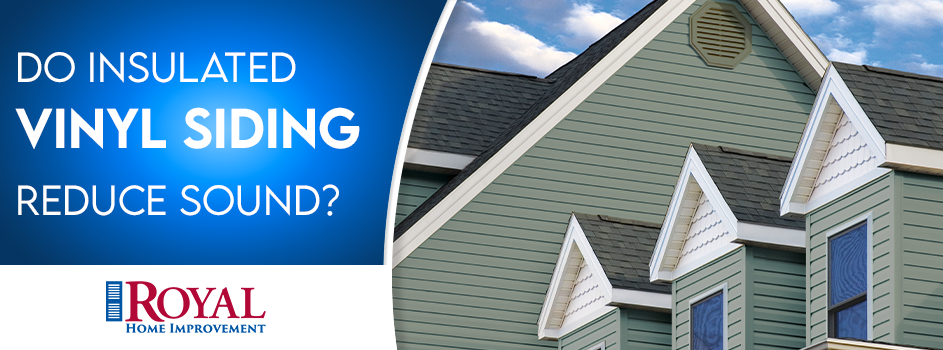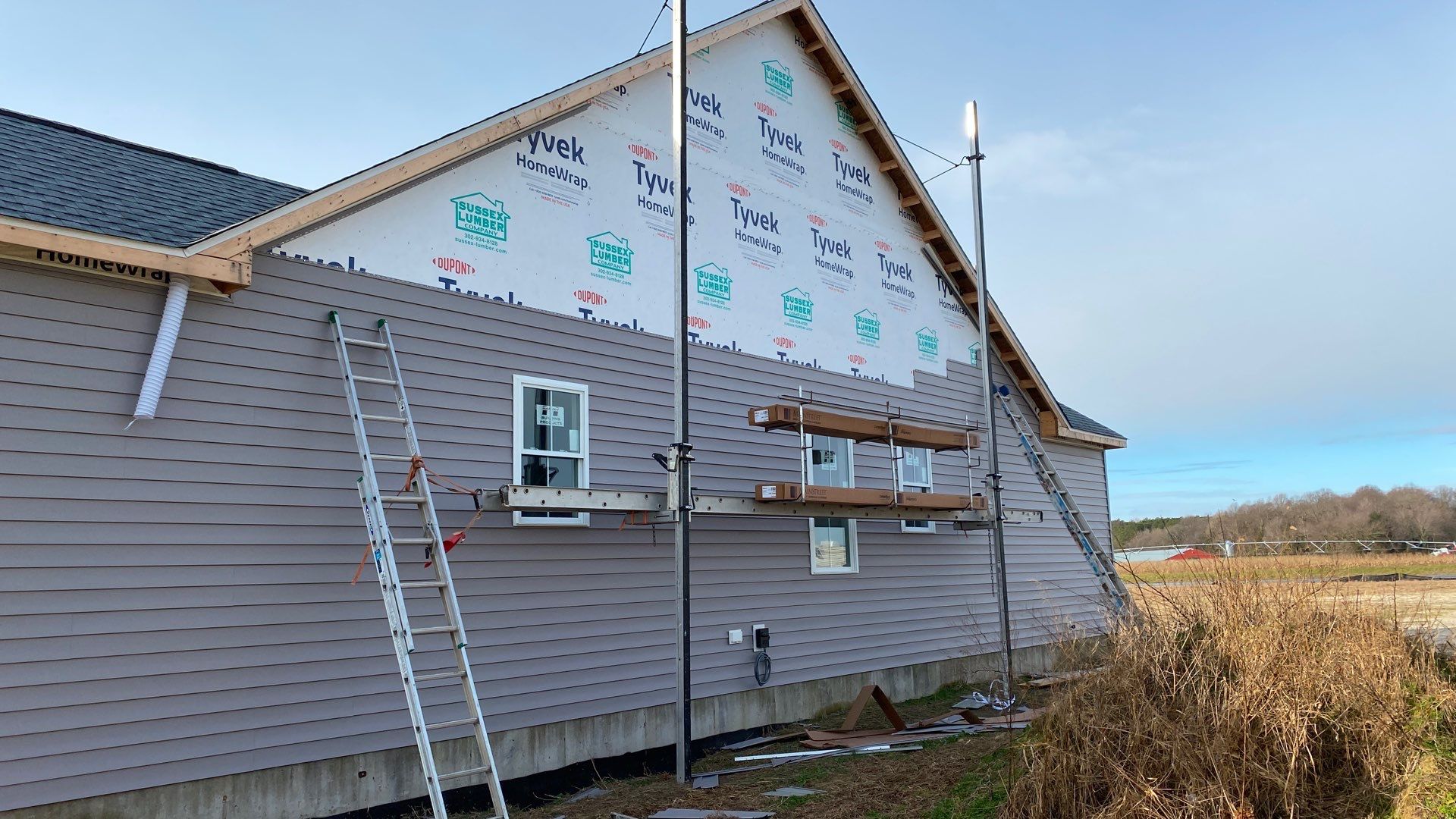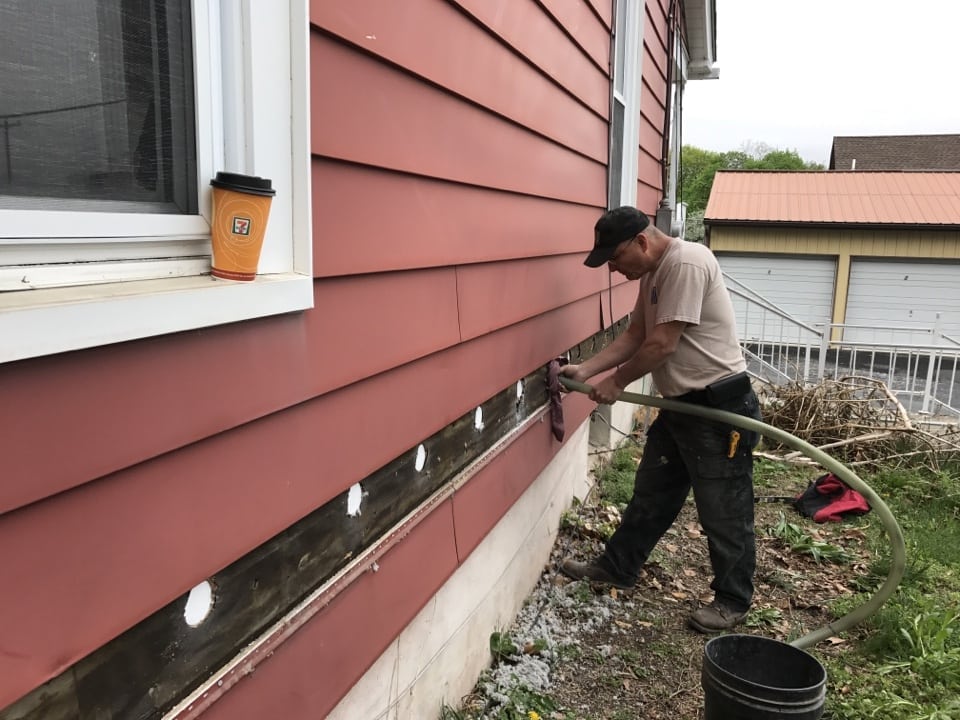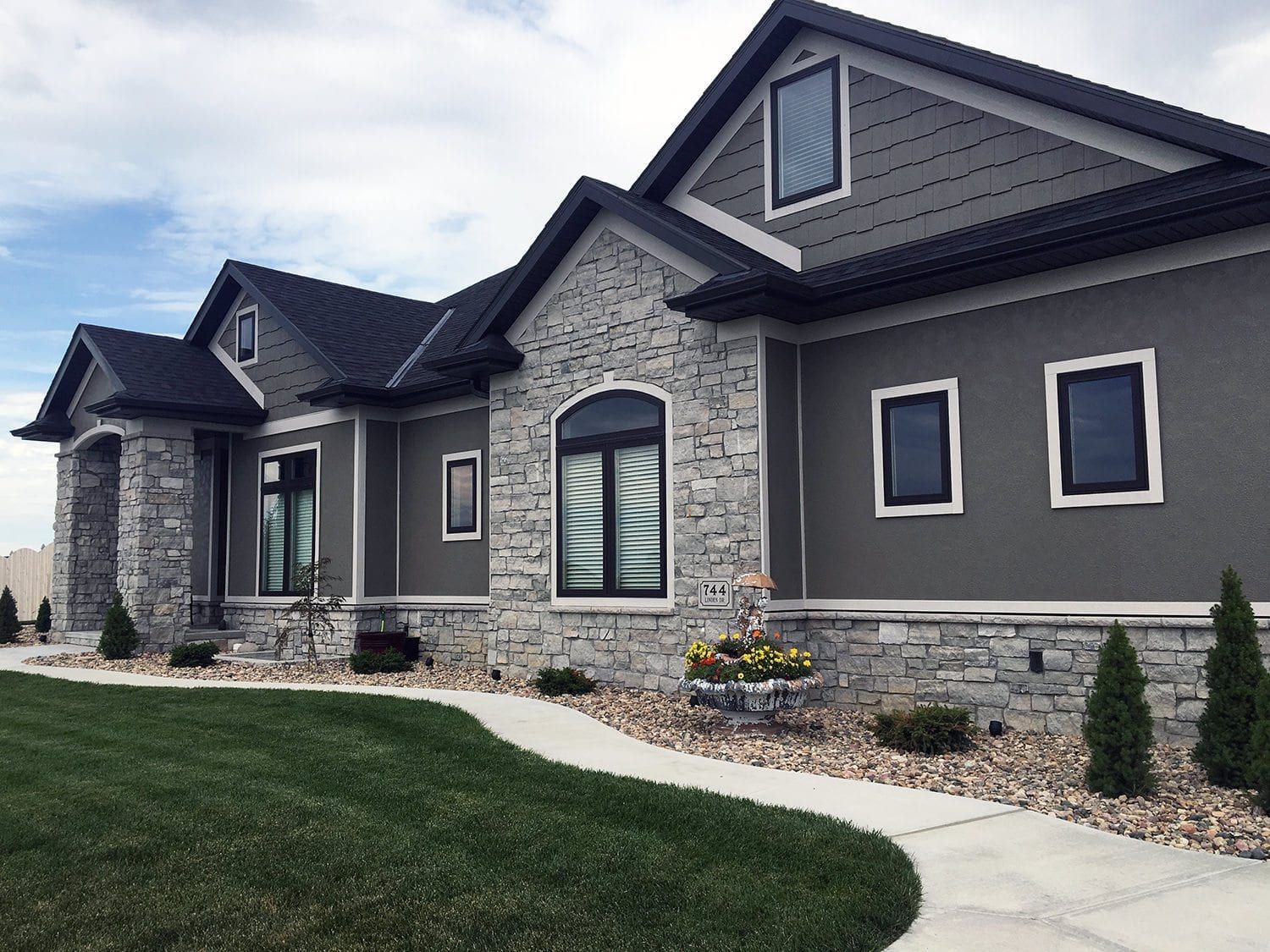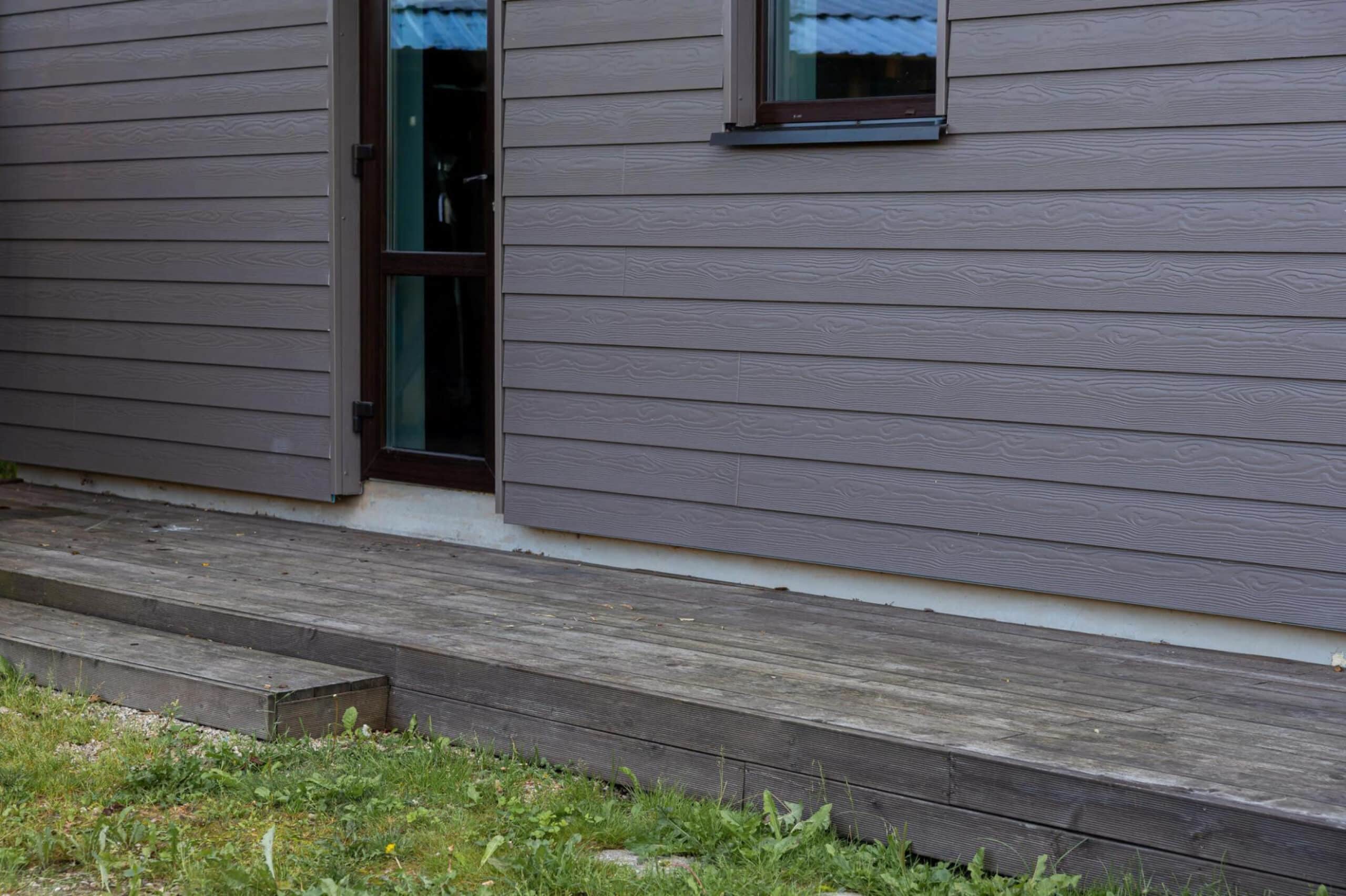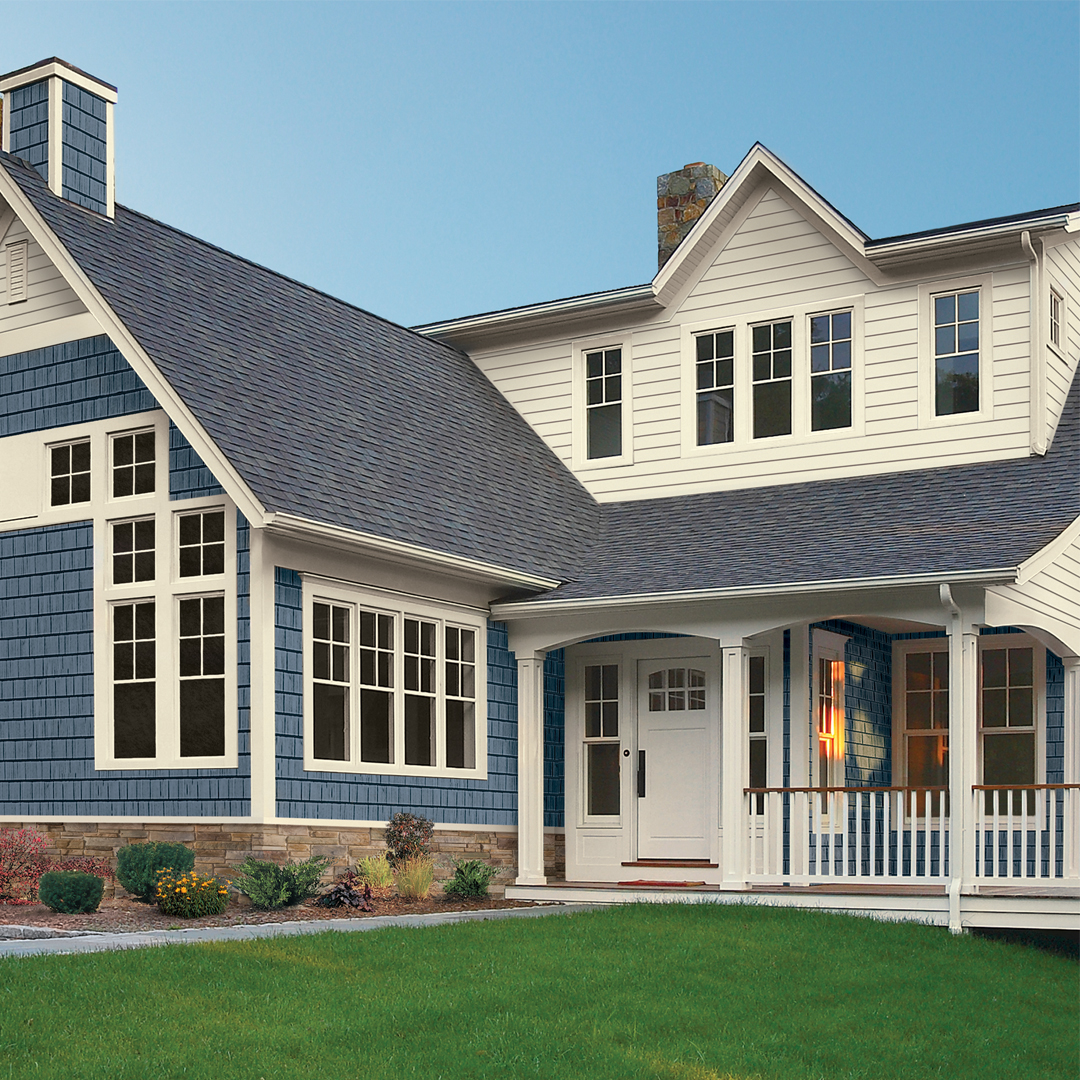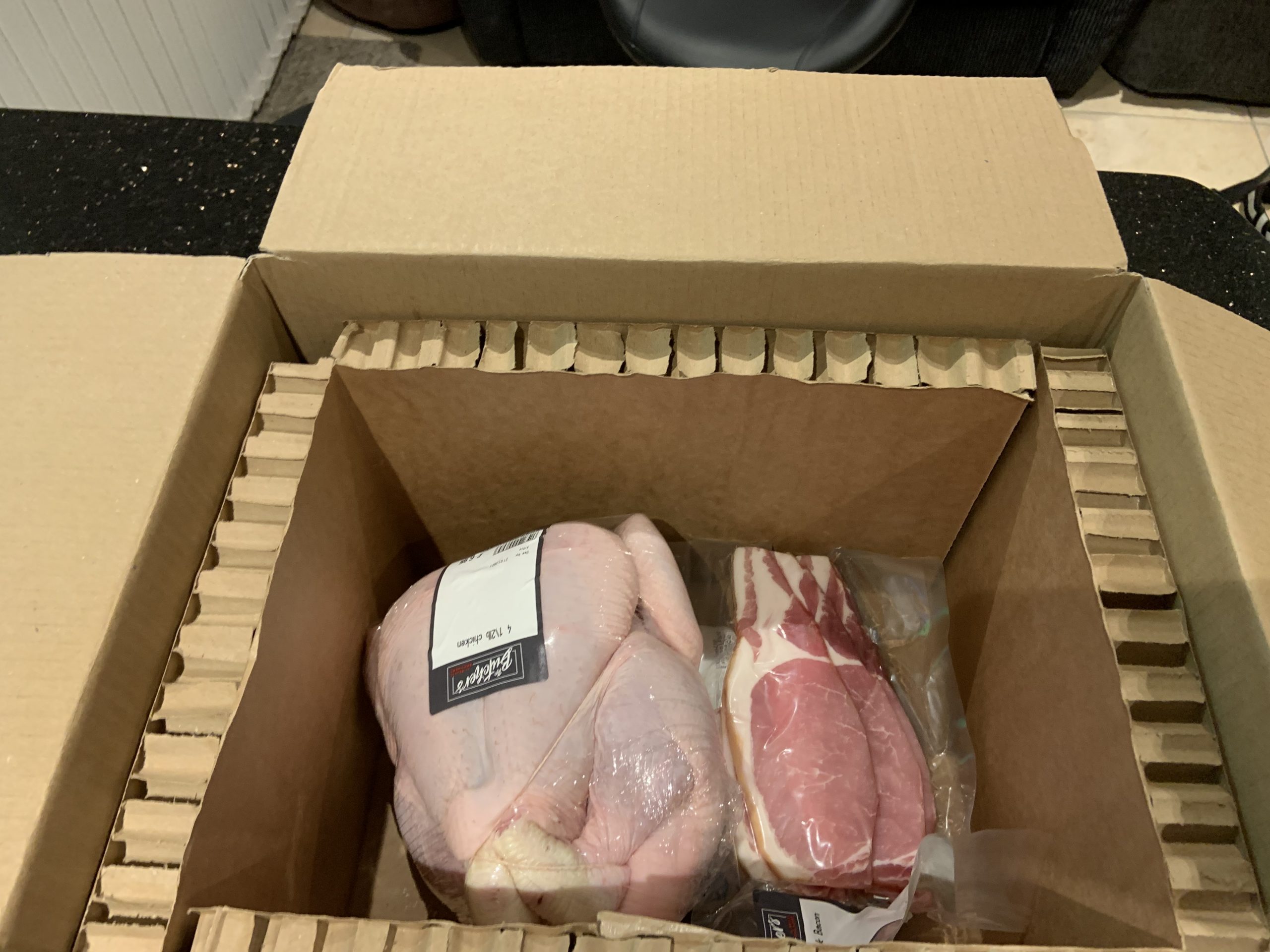Fiber Cement Insulated Siding: A Comprehensive Guide
Fiber cement insulated siding offers a compelling blend of aesthetics, durability, and energy efficiency. This innovative cladding material combines the strength and weather resistance of fiber cement with integrated insulation, resulting in a superior exterior solution for residential and commercial buildings. This guide delves into the composition, installation, benefits, and long-term value of fiber cement insulated siding, providing a comprehensive overview for homeowners and professionals alike.
From its manufacturing process and unique properties to its impact on energy consumption and environmental footprint, we will explore every facet of this increasingly popular siding choice. We’ll compare it to other materials, discuss installation best practices, and address common concerns to provide a complete understanding of its advantages and potential drawbacks.
Introduction to Fiber Cement Insulated Siding
Fiber cement insulated siding offers a durable and energy-efficient exterior cladding solution for homes and commercial buildings. It combines the strength and longevity of fiber cement with the insulating properties of a foam core, resulting in a product that provides both aesthetic appeal and improved thermal performance.
Fiber cement insulated siding is manufactured by combining Portland cement, cellulose fibers (often wood pulp), and silica sand. These ingredients are mixed with water and then formed into panels under high pressure. A layer of rigid foam insulation is then bonded to the fiber cement panel, creating the insulated siding. The panels are then cured and finished, often with a textured surface to mimic the appearance of wood or other materials. Finally, a protective coating is applied to enhance durability and weather resistance.
Fiber cement insulated siding offers several key advantages over traditional siding materials. Compared to vinyl siding, it boasts superior durability and resistance to damage from impact, fire, and insects. Unlike wood siding, it requires minimal maintenance and is not susceptible to rot or insect infestation. Its inherent fire resistance is a significant safety benefit. Furthermore, the integrated insulation layer reduces energy consumption by improving the home’s thermal envelope, leading to lower heating and cooling costs. Compared to other insulated siding options like foam-backed vinyl, fiber cement provides superior strength and longevity, justifying the potentially higher initial cost.
Fiber Cement Insulated Siding Lifespan and Maintenance
Fiber cement insulated siding typically boasts a lifespan of 50 years or more with proper installation and maintenance. This longevity significantly reduces the frequency of replacement compared to many other siding materials. Regular maintenance is minimal and primarily involves occasional cleaning to remove dirt and debris. High-pressure washing should be avoided as it can damage the surface. Minor repairs, such as replacing damaged panels, are relatively straightforward. Addressing any cracks or damage promptly helps prevent further deterioration. While the integrated insulation is protected within the panel, ensuring proper ventilation around the siding is crucial for preventing moisture buildup and maintaining the overall structural integrity of the home’s exterior. Neglecting maintenance could potentially lead to premature degradation, but with proper care, this long-lasting siding option will remain attractive and functional for decades.
Insulation Properties and Energy Efficiency
Fiber cement insulated siding offers a unique combination of protective cladding and integrated insulation, leading to significant improvements in energy efficiency compared to traditional siding options. This integrated approach simplifies installation and provides a continuous layer of insulation, minimizing thermal bridging and maximizing energy savings.
The inherent insulation properties of fiber cement insulated siding directly impact a building’s energy consumption and indoor comfort levels. This is achieved through a reduction in heat transfer, both in summer and winter months, leading to lower energy bills and a more comfortable living or working environment.
R-Value Comparison
Fiber cement insulated siding typically boasts an R-value ranging from R-8 to R-13, depending on the thickness of the insulation core. This compares favorably to other common insulation materials. For instance, standard fiberglass batts commonly used in wall cavities often achieve R-13 to R-15 per inch, meaning a comparable level of insulation might require a thicker layer of fiberglass. Rigid foam insulation boards, such as polyisocyanurate (polyiso) or extruded polystyrene (XPS), offer higher R-values per inch but typically require separate installation steps and can be more costly. The integrated nature of fiber cement insulated siding simplifies installation and eliminates potential gaps or air infiltration common in multi-layered systems.
Energy Consumption Reduction
The improved thermal performance of fiber cement insulated siding directly translates into lower energy consumption for heating and cooling. In residential buildings, this can mean a reduction in the use of furnaces, air conditioners, and heating pumps, resulting in substantial savings on utility bills. For commercial buildings, the savings can be even more significant due to larger surface areas and higher energy demands. Studies have shown that buildings with properly installed fiber cement insulated siding can experience a reduction in energy consumption by up to 20%, depending on climate and building design. For example, a large office building in a cold climate could see a significant decrease in its natural gas consumption for heating, while a retail store in a hot climate could see a noticeable drop in its electricity usage for air conditioning.
Improved Indoor Comfort
By reducing heat transfer through the exterior walls, fiber cement insulated siding contributes to a more stable and comfortable indoor temperature. This means fewer temperature fluctuations throughout the day and a reduction in drafts, leading to a more pleasant and consistent indoor environment. In the summer, the siding helps keep the interior cooler, reducing the strain on air conditioning systems. In the winter, it helps retain heat, minimizing the need for excessive heating. This improved thermal stability reduces the likelihood of hot or cold spots within a building, leading to greater occupant satisfaction and increased productivity in commercial settings. For instance, a home with fiber cement insulated siding might experience a more consistent temperature throughout the house, eliminating the need for supplemental heating in colder rooms. Similarly, a classroom might see improved learning conditions with more comfortable and consistent temperatures throughout the school day.
Durability and Weather Resistance
Fiber cement insulated siding boasts exceptional durability and weather resistance, making it a popular choice for homeowners seeking long-lasting exterior cladding. Its inherent properties contribute to its resilience against various environmental challenges, offering significant advantages over other materials.
Fiber cement’s resistance stems from its composite nature. The blend of cement, cellulose fibers, and other additives creates a robust material that can withstand significant stress and strain. This translates to exceptional performance in harsh climates.
Resistance to Extreme Temperatures
Fiber cement siding demonstrates remarkable stability across a wide range of temperatures. Unlike some materials that expand and contract significantly with temperature fluctuations, fiber cement experiences minimal dimensional changes. This reduces the risk of cracking, warping, or other damage caused by extreme heat or cold. For example, in regions experiencing scorching summers and freezing winters, fiber cement consistently outperforms vinyl siding, which can become brittle in cold weather and warp in intense heat.
Resistance to Moisture and Wind
Fiber cement’s inherent density and low porosity make it highly resistant to moisture penetration. This prevents water damage, rot, and the growth of mold and mildew, common problems with wood siding. Its strength also allows it to withstand strong winds and heavy rain without significant damage. Furthermore, properly installed fiber cement siding, with appropriate caulking and sealing, forms a strong barrier against wind-driven rain, ensuring the integrity of the home’s structure.
Potential Vulnerabilities and Mitigation Strategies
While highly durable, fiber cement siding is not impervious to damage. Improper installation can lead to vulnerabilities. For example, gaps between panels can allow water penetration, while inadequate sealing around windows and doors can create entry points for moisture. Careful attention to detail during installation is crucial. Regular inspection and prompt repair of any damage, such as cracks or chips, are also essential to maintain the siding’s longevity. Using appropriate fasteners and following manufacturer guidelines for installation will significantly mitigate these risks.
Comparison with Other Exterior Cladding Options
| Material | Durability | Maintenance | Cost |
|---|---|---|---|
| Fiber Cement | High; resistant to rot, insects, and fire; long lifespan (50+ years) | Low; occasional cleaning and repair of minor damage | Medium-High |
| Vinyl Siding | Moderate; susceptible to impact damage and fading; shorter lifespan (20-30 years) | Low; occasional cleaning | Low-Medium |
| Wood Siding | Low-Moderate; susceptible to rot, insects, and fire; requires regular maintenance | High; regular painting, staining, and repair | Medium-High |
| Aluminum Siding | High; resistant to rot, insects, and fire; long lifespan (50+ years) | Low; occasional cleaning | Medium |
Installation and Application
Installing fiber cement insulated siding is a relatively straightforward process, but proper technique is crucial for achieving a long-lasting, energy-efficient, and aesthetically pleasing result. Careful preparation and attention to detail during each step will minimize potential problems and ensure a successful installation. This section outlines the key steps and best practices for installing fiber cement insulated siding, including specific considerations for areas around windows and doors.
The installation process generally involves several key stages: preparation, sheathing, installation of the siding panels, and finishing. Each stage requires careful attention to detail to ensure proper alignment, sealing, and fastening. Improper installation can lead to issues such as water leakage, thermal bridging, and premature deterioration of the siding.
Preparation and Sheathing
Before installing the fiber cement insulated siding, the existing wall surface must be properly prepared. This involves removing any old siding, repairing damaged areas, and ensuring the surface is clean, dry, and level. Any necessary repairs should be made using appropriate materials to ensure structural integrity. Once the surface is prepared, appropriate sheathing, typically a moisture-resistant material like plywood or OSB, should be installed to provide a stable base for the siding. The sheathing should be properly fastened and sealed to prevent moisture penetration. Proper sheathing is essential for a stable and long-lasting installation. All fasteners should be driven straight and flush with the sheathing to avoid creating irregularities.
Installing Fiber Cement Insulated Siding Panels
The fiber cement insulated siding panels are then installed, typically starting from the bottom and working upwards. Each panel should be carefully aligned and secured using appropriate fasteners, ensuring proper spacing and overlap according to the manufacturer’s instructions. Fasteners should be corrosion-resistant and sized to suit the thickness of the siding. It is critical to maintain consistent spacing between fasteners to avoid cracking or damage to the panels. The use of a level and plumb bob will ensure straight lines and a professional-looking finish. Special attention should be paid to ensuring a tight seal at all joints and overlaps to prevent water intrusion. Caulk or sealant should be used to fill any gaps or crevices.
Installing Around Windows and Doors
Installing fiber cement insulated siding around windows and doors requires extra care to ensure a watertight and aesthetically pleasing finish. Precise measurements are crucial to ensure proper fit and alignment. J-channels or trim pieces are typically used to create a neat and finished look around these openings. These trim pieces should be carefully installed to provide a smooth transition between the siding and the window or door frames. Caulking and sealant should be liberally applied to prevent water from penetrating around these vulnerable areas. This step is crucial to prevent water damage and ensure the longevity of the installation. The use of flashing is also recommended to further prevent water intrusion.
Best Practices and Common Mistakes
Several best practices can help ensure a successful fiber cement insulated siding installation. These include using the correct fasteners, maintaining consistent spacing between panels and fasteners, ensuring proper alignment and leveling, and using appropriate caulking and sealants. Common mistakes include improper fastening, inadequate sealing, and incorrect panel alignment, all of which can compromise the integrity and longevity of the installation. Using a laser level and following manufacturer instructions precisely are vital for preventing these issues. Careful planning and preparation are also crucial for a smooth installation process, minimizing time and effort.
Cost and Value Considerations
Choosing exterior siding involves a careful balancing act between upfront costs and long-term value. Fiber cement insulated siding, while often having a higher initial investment than some alternatives, offers significant advantages that contribute to substantial long-term savings and increased property value. Let’s explore the financial aspects in more detail.
Initial Cost Compared to Other Siding Options
Fiber cement insulated siding typically costs more upfront than vinyl or aluminum siding. However, this higher initial investment is often offset by the long-term benefits. For example, a comparable-sized house might see vinyl siding installation cost approximately $8,000 – $15,000, while fiber cement could range from $15,000 to $30,000 or more, depending on factors like house size, complexity of the installation, and the chosen style and finish. The higher cost reflects the superior material quality, insulation properties, and durability inherent in fiber cement. Aluminum siding typically falls somewhere between vinyl and fiber cement in terms of initial cost.
Long-Term Cost Savings
The energy efficiency provided by insulated fiber cement siding leads to considerable long-term cost savings. The integrated insulation layer reduces the amount of energy needed to heat and cool your home. This translates to lower utility bills over the lifespan of the siding, potentially saving homeowners hundreds or even thousands of dollars annually, depending on climate and energy usage. Consider a home in a region with extreme temperatures: the reduction in energy consumption could easily offset the higher initial cost within a few years. For example, a homeowner in a northern climate might see a 20-30% reduction in heating costs alone.
Increased Property Value
Investing in high-quality, durable siding like fiber cement insulated siding significantly enhances a property’s value. Potential buyers recognize the long-term benefits of energy efficiency and low maintenance. This translates into a higher resale value when compared to homes with less durable or less energy-efficient siding options. Appraisers often consider the quality of exterior materials when assessing a home’s worth. The superior longevity and aesthetic appeal of fiber cement siding, combined with its energy-saving capabilities, make it an attractive feature for buyers, contributing to a stronger return on investment when the property is eventually sold.
Aesthetic Considerations and Design Options
Fiber cement insulated siding offers a compelling blend of functionality and aesthetics, providing homeowners with a wide array of choices to enhance the curb appeal and architectural character of their homes. The versatility of this material allows for customization to suit diverse architectural styles and personal preferences.
Fiber cement siding’s aesthetic appeal stems from its ability to convincingly mimic the look of other materials while offering superior durability and energy efficiency. This section explores the diverse color palettes, textures, and design possibilities offered by fiber cement insulated siding, illustrating how it can transform the look and feel of a building.
Color and Texture Variety
The range of colors available in fiber cement insulated siding is extensive, encompassing a spectrum from classic neutrals to bold, vibrant hues. Many manufacturers offer a wide palette of pre-finished colors, often inspired by natural elements like wood grains and stone finishes. These colors are designed to withstand the elements and maintain their vibrancy over time. Textures also play a crucial role in the aesthetic appeal. Options range from smooth, sleek surfaces to those with deeply embossed patterns that mimic the look of wood shakes or clapboard. This variety allows homeowners to select a siding that complements their home’s style and personal taste. For instance, a home with a craftsman style might benefit from siding that replicates the look of natural wood, while a modern home could be accentuated with smooth, contemporary finishes.
Fiber Cement Siding and Architectural Styles
Fiber cement siding’s adaptability makes it suitable for a wide range of architectural styles. Its versatility allows it to seamlessly integrate into traditional, contemporary, and even rustic designs. For example, a Victorian-style home could be beautifully complemented by siding that mimics the intricate details of wood shingles, while a sleek, modern home might be enhanced by smooth, flat panels in a sophisticated color. The material’s ability to replicate the look of wood, stone, or stucco allows homeowners to achieve a desired aesthetic without compromising on the long-term performance benefits of fiber cement.
Illustrative Examples of Fiber Cement Siding Designs
Imagine a quaint Cape Cod-style home clad in fiber cement siding that replicates the look of weathered cedar shingles. The warm, earthy tones of the siding create a welcoming and timeless aesthetic. The texture is subtly rough, adding depth and visual interest. Alternatively, picture a contemporary ranch home featuring large, smooth panels of fiber cement siding in a clean, modern grey. The sleek, minimalist design enhances the home’s contemporary lines, creating a sophisticated and stylish look. Finally, consider a craftsman-style bungalow adorned with fiber cement siding that mimics the appearance of natural wood clapboard. The rich, warm tones of the siding, combined with the classic vertical lines of the clapboard, create a visually appealing and harmonious design. These examples demonstrate how fiber cement insulated siding can transform the look and feel of a building, adapting to various architectural styles and homeowner preferences.
Environmental Impact and Sustainability
Fiber cement insulated siding presents a complex environmental profile, encompassing both potential drawbacks and significant sustainability advantages. Understanding its lifecycle, from manufacturing to disposal, is crucial for evaluating its overall impact on the environment. This section will explore the environmental considerations associated with this building material, comparing it to alternatives and highlighting its sustainable features.
The manufacturing process of fiber cement siding involves the combination of cement, cellulose fibers (often recycled wood pulp), and other additives. Energy is consumed in the mining of raw materials, manufacturing processes, and transportation to the point of sale. Disposal typically involves landfill placement, although some regions are exploring recycling options for the constituent materials. The embodied carbon—the total greenhouse gas emissions associated with a product’s entire lifecycle—is a key metric for assessing its environmental impact. While fiber cement siding generally has a lower embodied carbon footprint compared to some alternatives, its manufacturing still involves energy consumption and resource extraction.
Manufacturing and Disposal Impacts
The environmental impact of fiber cement siding manufacturing stems primarily from energy consumption during the production process and the extraction of raw materials. Cement production, a significant component of fiber cement, is energy-intensive and contributes to greenhouse gas emissions. The transportation of raw materials and finished products also adds to the carbon footprint. Disposal, while less impactful than manufacturing, still contributes to landfill volume. However, the potential for recycling some components, such as the cellulose fibers, offers a pathway to mitigate this. For example, some manufacturers are actively exploring methods to increase the percentage of recycled content in their fiber cement products, thus reducing reliance on virgin materials and decreasing the overall environmental impact.
Comparison with Other Siding Materials
Compared to materials like vinyl siding, fiber cement often demonstrates a smaller environmental footprint over its lifespan. Vinyl siding production is highly reliant on fossil fuels and releases significant amounts of greenhouse gases during manufacturing. Furthermore, vinyl siding’s non-biodegradability leads to significant landfill contributions. While wood siding is a more sustainable option in terms of renewability, its susceptibility to rot, insect infestation, and the need for frequent maintenance or replacement may negate some of its environmental benefits over the long term. The durability and longevity of fiber cement siding contribute to its overall environmental advantage when compared to these alternatives. A life cycle assessment (LCA), a standardized methodology for evaluating environmental impacts, often shows fiber cement to be favorable when considering factors such as material sourcing, manufacturing processes, transportation, and end-of-life management.
Sustainable Aspects of Fiber Cement Siding
Fiber cement siding incorporates sustainable practices in several key areas. The use of recycled cellulose fibers in many formulations reduces reliance on virgin wood pulp, thereby conserving forest resources and lowering the overall environmental impact. The durability and longevity of fiber cement siding also contribute to its sustainability. Its resistance to rot, insects, and fire means it requires less frequent replacement compared to other materials, reducing the need for resource extraction and manufacturing over the building’s lifetime. Furthermore, the inherent insulating properties of certain fiber cement insulated siding products reduce the building’s energy consumption for heating and cooling, leading to lower greenhouse gas emissions from energy production. This energy efficiency translates directly to environmental benefits, reducing the overall carbon footprint associated with the building’s operation.
Outcome Summary
Fiber cement insulated siding emerges as a strong contender in the world of exterior cladding, balancing aesthetic appeal with superior performance. Its inherent durability, energy-saving properties, and relatively low maintenance requirements translate to long-term cost savings and increased property value. While the initial investment might be higher than some alternatives, the return on investment, both financially and environmentally, makes it a worthwhile consideration for those seeking a high-performance, sustainable, and attractive exterior for their building.
